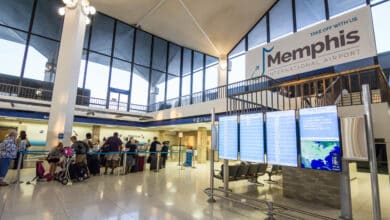Greenpeace: Salmon farming threatens ecosystem off Chile’s Patagonia
By Meritxell Freixas
Santiago, Sep 27 (EFE).- A new Greenpeace documentary film produced in collaboration with the History Channel is shedding light on Chile’s salmon industry and the threat it poses to pristine waters off the coast of that country’s Patagonia region.
“Por aquí no” (Not Here) analyzes the impact that the harvesting of salmonids for commercial purposes – an industry promoted by the 1973-1990 dictatorship of Gen. Augusto Pinochet – has on the ecosystems and communities of southern Chile.
Coinciding with that documentary’s release on Tuesday, Greenpeace Chile Director Matias Asun explained in an interview with Efe that no point of equilibrium can be reached that would make salmon farming sustainable.
Question: Considering all the environmental conflicts in the country, why did Greenpeace decide to make a documentary on the salmon industry?
Answer: We started working on the salmon farming conflicts in light of a big disaster that occurred in 2016 … when a massive die-off occurred at multiple centers in the Los Lagos Region, in Chiloe Island and Puerto Montt. Tons of dead salmon were left to decompose on the ocean floor, wreaking havoc on the region’s economy and social conditions.
Q: How does that pollution occur?
A: It’s an industry that generates tons of waste underneath each of the salmon farming centers. They’re underwater buildings with agglomerations of salmon that receive antibiotics, antiparasitic liquids and special treatments that contaminate the sea bed, and that’s in addition to the salmon’s feces. All of that creates the conditions for ecosystemic collapse.
In Chile, up to 500 times more antibiotics are allowed than what’s used in Europe … This occurs in one of the most pristine areas we have on the planet – the Patagonian fjords.
Q: Why does the salmon industry look to set up its operations in pristine areas?
A: Expansion into these areas brings down costs. Since they’re cleaner, there are fewer problems because they’re sites that are healthier. But they’re much more fragile and serve as a home for iconic species for our country like humpback whales and Chilean dolphins.
The coastline of the Magallanes region is full of fjords and fjord-like channels whose ecosystemic conditions are so rich that they’re visited by more than 50 percent of the world’s cetacean species and a significant portion of the world’s migrant species.
Q: The industry defends itself by saying it creates jobs in impoverished areas of the country. What is the cost-benefit calculation of these companies operating in these territories?
A: What’s employment today is hunger tomorrow. From a long-term perspective, an industry that by definition is unsustainable shouldn’t operate in a place with this economic potential, this wealth. Wouldn’t it be much better to create processes that enable coexistence between industries that generate capital, like tourism or conservation alternatives, without the need to destroy one of the most pristine places in the world?
Q: Have there been efforts in the legislature to regulate the industry through legislation?
A: Yes, but the laws on the books are not enforced with the necessary force and strength. The salmon industry in Chile mainly exists thanks to its complete disregard for environmental law.
Q: Is there a dialogue involving communities, environmental organizations and industry representatives?
A: There are conversations, but they can’t bypass the democratic conditions for enforcing the rule of law. We’re not calling for the industry to disappear entirely. We don’t want the number of salmon farms to further increase or for them to be installed in the Patagonian fjords in the south. And we want the environmental laws to be enforced to sanction those projects that are destroying the environment. EFE
mfm/mc





